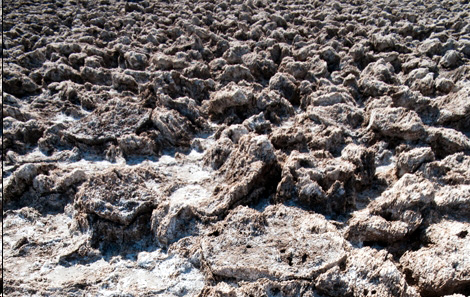Lake Vostok, Europa, and Washington
Cool new concept for a Europa lander! Wish we could afford it.

What's underneath? And what's that red stuff? Thera Macula, as seen by the Galileo spacecraft.(NASA/JPL/University of Arizona)
The news that Russian scientists have finally drilled through the thick ice covering Antarctica’s mysterious Lake Vostok got me thinking, naturally, of Europa. Biologists hope to find previously unknown forms of life in Vostok, whose waters have effectively been sealed off from the outside world for eons. So, too, Jupiter’s moon might someday yield clues about — or even our first glimpses of — life beyond Earth. Europa is one of the first places to go if you’re searching for aliens, since it also has an ice-capped ocean.
Unfortunately, NASA’s planetary program is broke.
More about that in a minute. First, though, what could we do if we had the money? A team at the Jet Propulsion Laboratory has come up with a concept for a Europa Lander that could be launched as soon as 2021. There are other, competing Europa concepts — an orbiter and a multiple flyby mission — but the lander is to me (forgive my childishness) the coolest. And, as JPL’s Dave Senske told NASA’s Outer Planets Assessment Group yesterday, it would be the “most definitive way to assess what’s on the surface.”
The team envisions a six-legged spacecraft weighing about 100 pounds, which could last on Europa for about a month (Jupiter’s intense radiation limits the lifetime). Equipped with cameras, spectrometers, and a seismometer, the lander would drill or jackhammer a few inches into the ground to collect samples from below the radiation-contaminated zone. One likely landing site, called Thera Macula (above), is streaked with intriguing reddish material that may indicate the presence of organics. There’s reason to suspect that pockets of liquid water exist less than two miles below the surface at Thera Macula. Reaching those underground lakes might be a job for some future Europa cryobot, but not this first lander.
Nobody knows how rough the landing site would be. Galileo and Voyager photos aren’t detailed enough to answer the question, and according to some thinking, Europa’s icy surface could be as rugged as Death Valley’s “Devil’s Golf Course” (pictured below), which poses an obvious risk to a legged lander. Potential sites would have to be scouted from orbit during the month before landing, using a camera similar to the HiRISE now orbiting Mars.
The JPL team tried very hard to design a mission using technology that’s already, or almost already, in hand. True, nobody’s ever done a precision landing on another planet using LIDAR for last-minute hazard avoidance. But as study team members pointed out at the OPAG meeting, such technology has been in development for more than a decade. They think it’s doable. Which is exciting.
Now the bad news. The Europa Lander would cost as much as $3.5 billion, not counting launch. And NASA has no money for such ambition. The agency’s planetary exploration budget has just been slashed, partly a victim of its own excesses. The Mars program has been among the biggest offenders of late, but advocates of missions to the outer planets have proven little better at bringing down costs. NASA’s top science official, John Grunsfeld, was briefed about the new Europa concepts yesterday, and reportedly liked what he heard. The orbiter and flyby estimates both came in under $2 billion, which is better than previous Europa concepts. Still, Grunsfeld could only quip to the JPL briefers, “Now we just need $2 billion.”
Until something changes, then, we’ll have to settle for Lake Vostok, or science fiction — like this upcoming film, The Europa Report, which takes place, presumably, in some distant, less economically pinched future.
